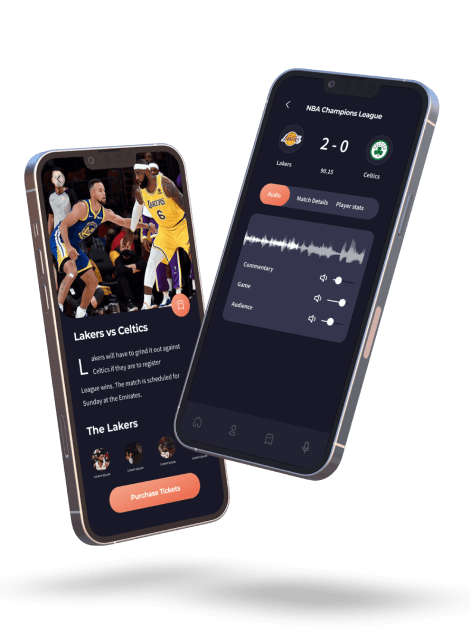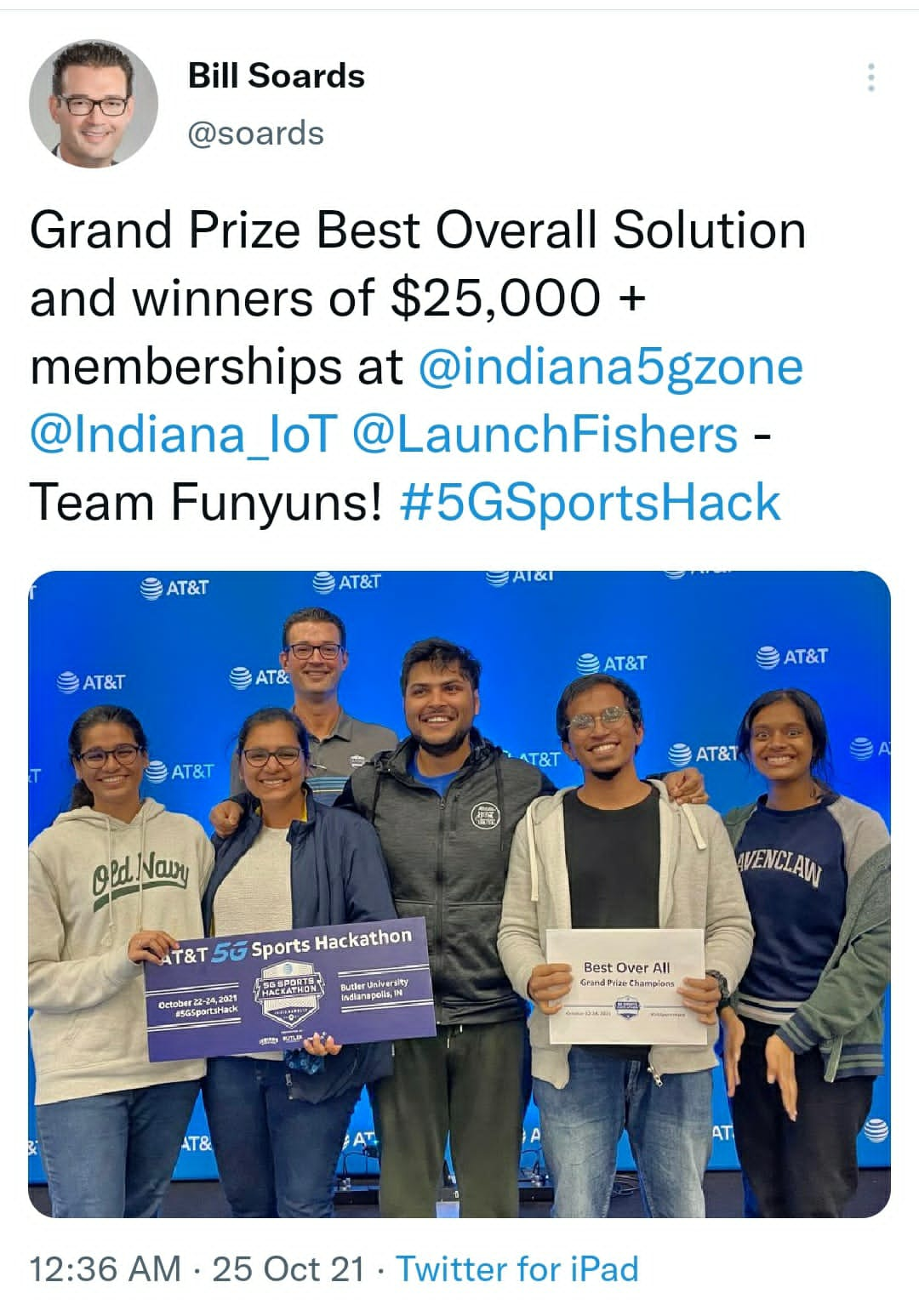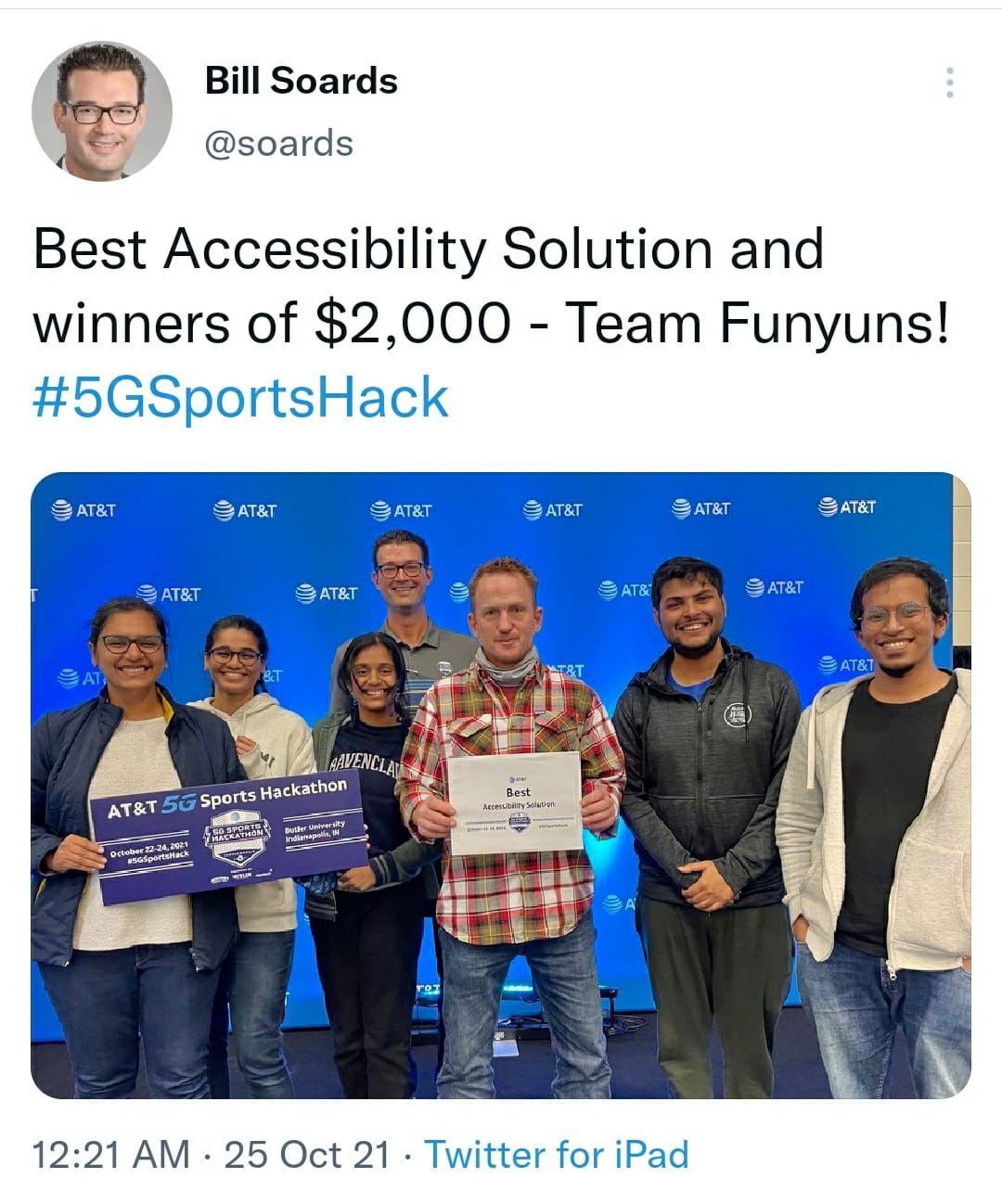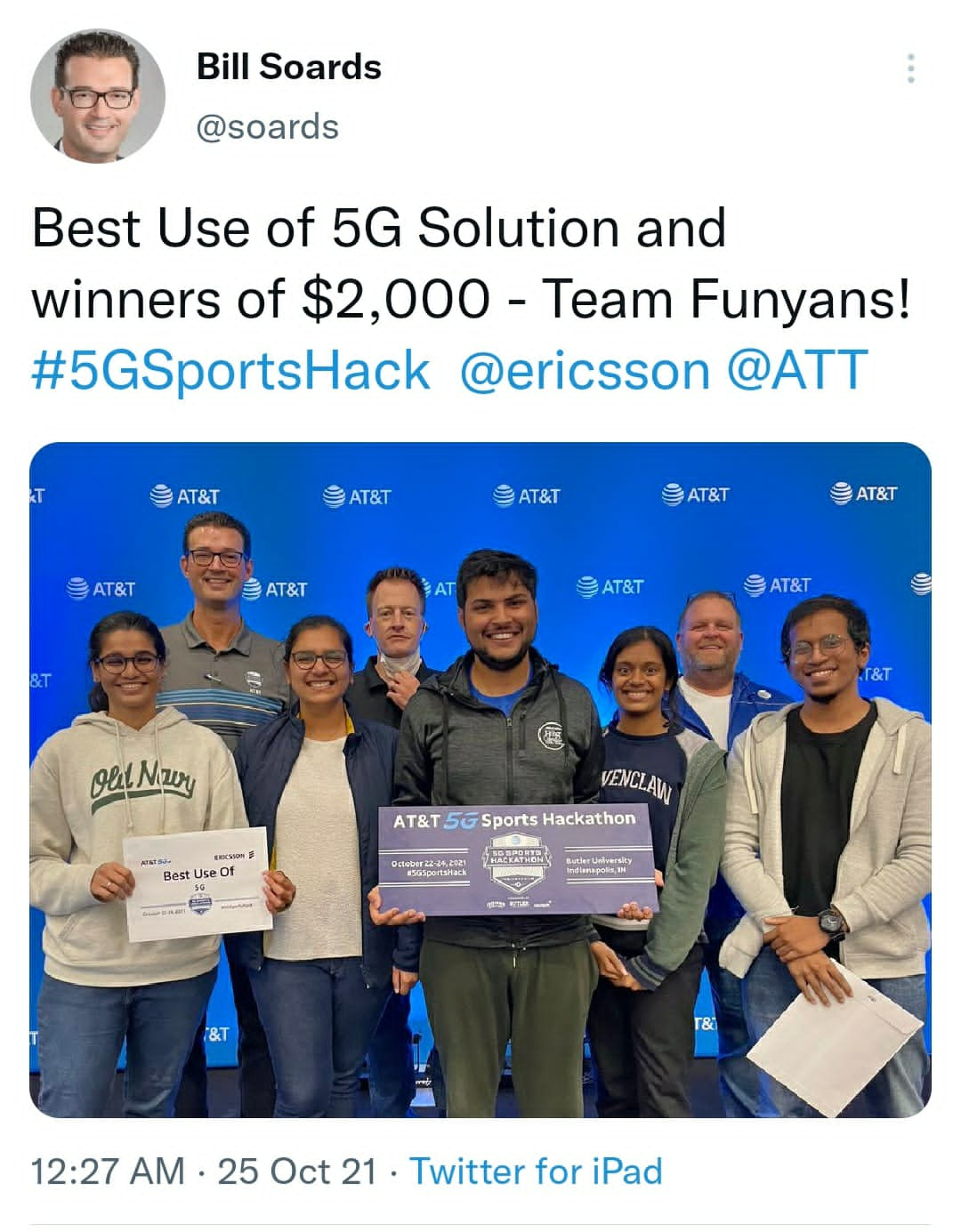
03
Courtside
Enhancing the basketball experience for the visually impaired
For
Project Type & Deliverables
Hackathon Project
Application Prototype
Proof of concept
Project Details
Role
UX designer
Team
4 HCI Students, 1 Bioinformatics student
Duration
48 hours Hackathon + 2 weeks research and ideation
Our Challenge
Conceptualize solutions that would leverage 5G to disrupt the way we experience, consume and engage with sports.
My Contributions
- Conceptualized initial and final idea.
- Spoke with professors to validated ideas.
- Constructed App Prototype.
Problem Statement
How might we enhance the basketball experience for the visually impaired and improve upon the experience of the average joe with the use of sound
Solution
A service that uses sound to enhance the Basketball experience for the visually impaired.
How will it work
Smart Ball
Sensors embedded within the ball capture the location of the ball on the court and the audio of the ball bouncing, the players and the audience.
Cloud
The audio and GPS data is sent to the cloud server where the audio signal is run through noise reduction.
App
The location and audio information is delivered user to construct a spatial audio experiencethat is delivered through the mobile app.
Spatial Audio Experience
Mobile App
Match list and details
The users can see all upcoming games on the application and can tap a game to see more details and buy a virtual ticket
Match screens and spatial audio experience
On purchasing a 'virtual ticket' users can view the match details and access the spatial audio experience which will be constructed using the sensors in the ball.
Voice Assistant
The app would also host a voice assistant to further simplify operation for the visually impaired
Design Process
Research
Ideation
Validation
Design
Formative Research
We conducted some online research to understand 5G and how it can be applied in sports. What we found out about 5G was that compared to previous generations it hasDue to the fast paced nature of sports the Low latency aspect of 5G stood out the most to us.
Low Latency
Greater Network Capacity
Higher Speed
Solution Requirements
Before moving to ideation we came up with a certain set of rules to guide our ideation. The solution would need to
- Employ accessibility effectively(Specific award for accessibility)
- Address the needs of a significant target audience
- Make effective use of 5G(Specific award for use of 5G)
- Engages the fans
Explorations
Using our understanding of 5G we performed an initial round of ideas to see which solution areas stood out to us. The ideas that I came up with are as follows
- Remote CoachingUsing VR and 5G coaches could train players from any part of the world. The coach could use some wearable tech that would transmit the posture and location of the coach to a player in another part of the world. The player could then interact with the projection of the coach as if the coach was standing in front of them.
- Tactile Braille displays for the visually impaired to “feel” the sportTactile braille displays could map out the locations and movements of players on the field. These displays could then be used by the visually impaired to see/feel how the players are moving
- Virtual BoxingMovements of boxers could be mapped in the VR world to allow two boxers to box virtually without coming in contact with each other.
Finalized Idea: Tactile Braille displays for the visually impaired to “feel” the sport
This idea satisfies the following requirements
- Employ accessibility effectively (The idea keeps in mind the accessibility for the visually impaired)
- Address the needs of a significant target audience (Opens up a sports experience for the visually impaired)
- Make effective use of 5G (Effective mapping of player positions would require low latency)
- Engages the fans (Adds another layer of interacttion for an entire demographic)
Expert Validation
I spoke with 2 professors in our university to validate our idea while the rest of the team spoke with 2 additional professors. Together we identified the following limitations in the idea.
Limitation #1
Tactile Braille displays are too expensiveThe service would make use of tactile braille displays which are too expensive for the average joe. Let alone for the visually impaired and their limited earning potential.
Limitation #2
The actual experience is in the soundWhile a tactile display would give the users an idea of where the players are located, the actually joy of any sport lies in the energy at the venue and not just the technicals of the sport
Limitation #3
Does not address ordinary sports fansWhile the tactile display would definitely enhance the experience of the visually impaired, such a service would be useless for people who can see clearly and would thus not address the latter part of our problem statement.
Rethinking the Idea
Keeping the Limitations in mind I realized that instead of a feel based product, a sound based product might have more to offer to the visually impaired which led us to the following solution:
An application that live streams gameplay audio from sensors embedded within the basketball and provides a spatial audio simulation of a courtside experience for the users through a mobile application.
App Sketches
The solution would have two components
Smart Ball with sensors
Mobile App for audio experience
For the mobile app we decided to sketch an experience that the visually impaired can easily navigate using audio and gestures. The following images illustrate how the gestures would work.
However upon consultation with William Lawrence who is the accessibility expert at AT&T we realised that this experience was not technically feasible. Android and iOS already come with their own Talkback and VoiceOver screen reader features which provide an inbuilt gesture based navigation system for all applications.
Read More about Talkback and Voiceover hereInformation Architecture
Final Figma Prototype
Next Steps
The future roadmap of this project will look like the following:
- Usability Evaluation: The prototype of the mobile application will need to be tested to iron out any usability issues for the visually impaired
- Prototype and Validation: A prototype of the Smart Basketball will be needed to perform research in order to validate that the visuallu impaired actually enjoy a spatial audio experience of basketball
- Mobile Application development: The mobile app which would deliver the spatial audio experience will have to be developed
Learnings
- Early Research: While working on this project we began our ideation and research much before the hackathon. This allowed us to control the depth of our research and iterate through our ideas
- Expert Validation: This project exposed me to the value of expert validation. Our winning idea was only generated after the professors we consulted walked us through the limitations of our initial idea. Additionally speaking with the experts also allowed us to anticipate the kind of questions that would rise up while pitching our concept and thus prepared us well to present an all-encompassing solution
Final Thoughts
Overall, we were really proud of what we made. From the beginning none of us went into this hackathon with the intention of winning something. Our main focus the whole time was to build something of value and we believe our product really hit the mark. Not the mention that the prize money was also quite handy.





